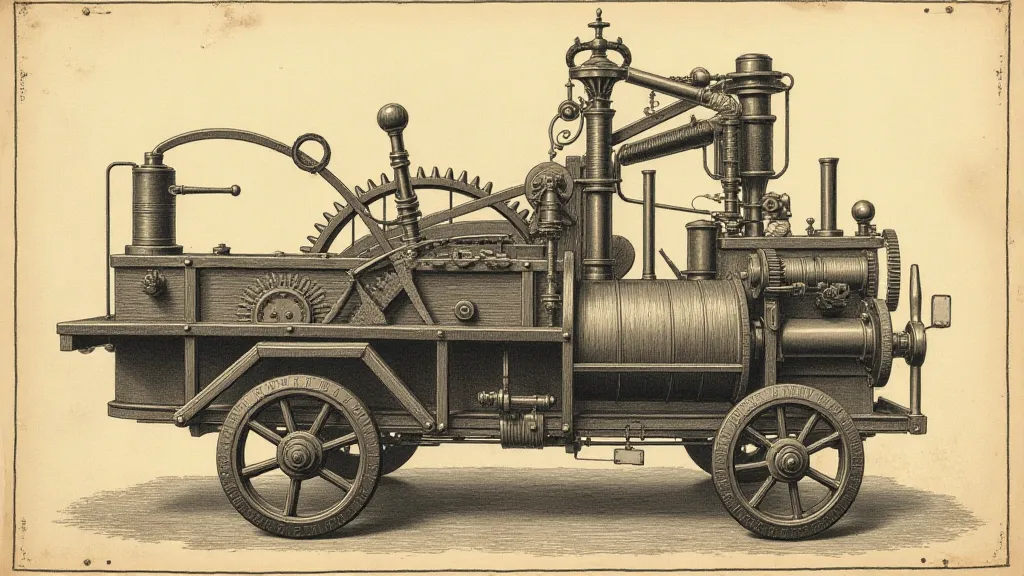Magnetic Resonance: Tuning into the Earth's Hidden Rhythm
There's a peculiar magic in holding an antique accordion. The weight of history settles in your hands – the echoes of laughter, dances, and songs carried through generations. But beyond the visual beauty and the promise of melody, lies a deeper, almost imperceptible hum. It’s a resonance not just of the reeds and bellows, but a subtle mirroring of the Earth itself. And that’s where the fascinating world of magnetometers and geomagnetic activity comes into play.
My grandfather, a quiet man of immense craftsmanship, left me his collection of accordions. He wasn’t a professional musician, but the meticulous care he took in maintaining them spoke volumes. Each button, each lever, each carefully stitched bellows was a testament to his dedication. I remember him telling me, “These aren’t just instruments, child. They're echoes.” I didn’t fully understand then, but I’m beginning to now, as I explore the unseen forces that shape our planet and how we can measure them.
The Earth acts as a giant magnet, generating a magnetic field that protects us from harmful solar radiation. It’s a field that's constantly shifting, influenced by the sun’s activity and processes deep within our planet's core. These fluctuations, known as geomagnetic activity, aren't static; they ebb and flow, creating patterns both predictable and surprising. And just as an accordion's mechanism relies on intricate interplay and precise alignment, so too do these magnetic fields weave a complex and dynamic tapestry.
Imagine, for a moment, a skilled accordion maker, painstakingly aligning each reed to vibrate perfectly. This precision is analogous to the complex algorithms and incredibly sensitive sensors required to detect minuscule variations in the Earth's magnetic field. A magnetometer, essentially a sophisticated compass, can measure the direction and strength of this field. Sophisticated systems, often used in scientific research and even in navigation, use multiple magnetometers to create a detailed map of these magnetic fluctuations. These aren't just lines on a chart; they represent a window into the Earth’s inner workings.

The Language of Geomagnetism
Geomagnetic activity isn’t just an abstract scientific concept. It's a language, and like any language, it can be deciphered. Solar flares, coronal mass ejections, and the movement of charged particles in the magnetosphere all contribute to variations we can measure. These variations manifest as disturbances in the magnetic field, appearing as irregularities in magnetometer readings. Understanding these variations is vital for a range of applications, from predicting radio blackouts caused by solar storms to ensuring the stability of satellite orbits.
My grandfather’s instruments, he explained, were built to last. The quality of the materials, the precision of the construction - everything was geared towards enduring. Similarly, the instruments we use to measure the Earth's magnetic field have to be incredibly robust and reliable, capable of filtering out local magnetic interference (like the magnetic fields produced by electrical appliances or iron deposits) to isolate the true signal from the Earth.
Building your own basic magnetometer setup is a fantastic project for makers and hobbyists. While the accuracy might not rival professional-grade instruments, the learning experience is invaluable. There are numerous DIY magnetometer tutorials online, often utilizing readily available components like Hall effect sensors. These projects offer a tangible connection to the invisible forces shaping our planet and a deeper appreciation for the ingenuity required to measure them.
Magnetic Motors & the Pursuit of Perpetual Motion – A Historical Perspective
The allure of harnessing magnetic forces has captivated inventors for centuries. The dream of building a perpetual motion machine, a device that runs forever without an external power source, has driven countless experiments, many involving magnets. While a true perpetual motion machine remains a theoretical impossibility (violating the laws of thermodynamics), the exploration of magnetic forces has spurred innovation in various fields, including electric motors and magnetic levitation.
Early magnetic motor designs often attempted to exploit the apparent force of attraction and repulsion between magnets. The challenges, however, lay in overcoming friction and achieving a continuous, self-sustaining motion. While these early attempts didn’t achieve perpetual motion, they contributed to our understanding of magnetic fields and their potential for converting energy.

Magnetic Levitation Projects: Defying Gravity
Magnetic levitation, or maglev, is a more successful application of magnetic forces. Maglev trains, for example, use powerful electromagnets to levitate and propel themselves along a track, achieving incredible speeds and reducing friction. Smaller-scale magnetic levitation projects are also popular among makers, utilizing the repulsive force between magnets to suspend objects in mid-air.
Building a simple magnetic levitation setup can be a rewarding experience. It requires careful selection of magnets, precise alignment, and often the use of feedback control systems to maintain stability. The visual impact of a levitating object is striking, and the underlying principles demonstrate the power of magnetic forces in a tangible way.
Magnet Safety & Responsible Experimentation
While magnets are fascinating and offer a wealth of possibilities for experimentation, it’s crucial to handle them with care. Strong magnets can pinch fingers or damage electronic devices. It's essential to read and follow safety guidelines, particularly when working with neodymium magnets, which are known for their exceptional strength.
My grandfather always emphasized the importance of respect for the tools and materials we use. He would say, “They have a story to tell, and it’s our responsibility to listen and care for them.” This principle extends to the responsible use of magnets and the careful consideration of their potential impact on the environment and personal safety.

A Resonance Continues
Holding my grandfather’s accordion, tuning it, and listening to its music, I feel connected to something larger than myself - a lineage of craftsmanship, a deep appreciation for the natural world, and a curiosity to understand the forces that shape our reality. Exploring geomagnetic activity through magnetometer projects isn't just a scientific endeavor; it’s an act of resonance, a tuning into the Earth’s hidden rhythm, a continuation of that very same echo. And perhaps, in understanding that resonance, we can better appreciate the beauty and fragility of our planet – and the importance of preserving the echoes of the past for generations to come.





